You’ve probably heard some fitness myths floating through the gym, the internet, or from friends and you may even believe some of these myths yourself! It’s important to understand the facts from fiction to protect yourself from injury, and to make sure you are exercising properly. Let’s dive into some popular fitness myths that we hear daily in the gym and explain why they are just that: myths!
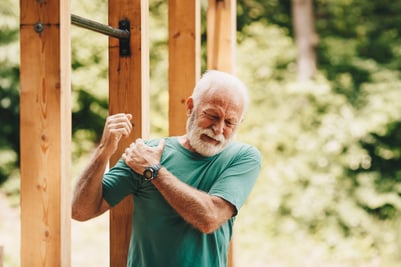 “No Pan, No Gain”
“No Pan, No Gain”
Pain and soreness should never be used to measure a good workout. Nor should you ever push through pain when exercising. Pain or soreness during exercise can either indicate delayed onset muscle soreness (DOMS), or an injury. If you ignore the pain you feel, repetitive movements can worsen the pain, resulting in a more serious issue over time. DOMS is normal, and usually lasts up to about 48 hours after exercise, and just means your body wasn’t used to the movement you performed. However, give those muscles a chance to recover before exercising them again to make sure that is all it was. Remember, listen to your body, it’s telling you something hurts for a reason.
"Spot Reducing Fat Exercises"
As a fitness professional, I have been asked several times what exercises a member can do to lose fat around the tummy, arms, backside, etc. Unfortunately, it is not possible to pinpoint certain areas of the body to lose fat. To lose fat, you need to burn more calories than you eat because this causes a calorie deficit. The body also does not burn fat only from the area you are working, because it uses energy from your body, leading to total body fat loss. Also, your body can be stubborn, and fat can be lost from different areas at different rates that you weren’t expecting. But please don’t let that discourage you! Know that the exercise is still beneficial and will increase strength and endurance in that area and sometimes give that part of the body a more “defined” appearance you are looking for!
“Lifting weights makes you bulky”
This saying could not be falser. Many think that heavy weights will make you bulky and light weights will make you lean. The type of weights you are lifting does not necessarily contribute to muscle growth, as most of the adaptations that make you stronger occur in your central nervous system. It is true that lifting weights will promote muscle hypotrophy leading to a size increase, but not “bulky” in appearance. In fact, to become the type of bulky you might be picturing, it takes a lot of time, hard work (and sometimes steroid use) to become “bulky”. In fact, for females, hormones prevent excess muscle mass. Muscle tissue is a lean tissue, so when paired with a good diet, strength training can help build a lean physique. Lifting heavier weights can offer several health benefits in your bones, muscles, ligaments, and brain, to name a few.
"Carbs make you gain weight"
Recent health trends have led people to believe carbohydrates are horrible for your body and cause excessive weight gain. This has mostly started to rise because highly processed carbohydrates are high in calories and sugars, leading to fat gain if eaten in excess. Complex carbohydrates like fruit, whole grains, and veggies are a valuable source of fuel used by your body and your brain to keep you alive. If you were to cut out carbs completely this would lead to weight loss, but not a healthy long term weight loss. It would also cause extreme lethargy, headaches, dizziness, and low blood sugar among some more mild side effects. The takeaway? Limit processed carbs and keep the whole foods!
"Lactic acid causes muscle soreness"
Lactic acid or lactate causing muscle soreness has been a fitness myth floating around for decades. While this myth was debunked in the 80s, many people (including some fitness professionals) still believe it to this day. Lactate doesn’t stick around in our muscles long enough after exercise to cause the soreness that we feel for the next day or two. Lactate clears out of our system about 30 to 60 minutes after exercise to be recycled into energy. The soreness we feel after exercise is the result of microtrauma (microscopic tears) in the muscle and connective tissue, leading to DOMS (mentioned above). There is a lot more science that goes into it, but this hits the basics.
Is there other information floating around the gym (or magazines) that you wonder has any truth to it? If you have access to a reputable source such a fitness professional, start there! Or, of course, the internet is full of answers, but you need to know that the website cites its findings and isn’t the thoughts of one individual. Regardless, we are glad you have interest in learning more to improve the work you do for your health every day!

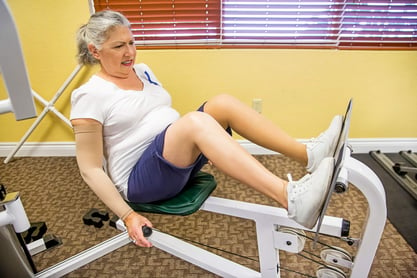 We’ve all heard that staying active as we get older is important, but let's really dig into the key players: what exactly can help prevent hospital visits due to common injuries like osteoporosis-related fractures?
We’ve all heard that staying active as we get older is important, but let's really dig into the key players: what exactly can help prevent hospital visits due to common injuries like osteoporosis-related fractures?

.jpg?width=477&height=318&name=GettyImages-1143018176%20(1).jpg) It isn’t a secret that as a person ages, there is an increased risk of falling. While there are a few different reasons this risk can increase, we will focus on what impacts a person’s ability to
It isn’t a secret that as a person ages, there is an increased risk of falling. While there are a few different reasons this risk can increase, we will focus on what impacts a person’s ability to 
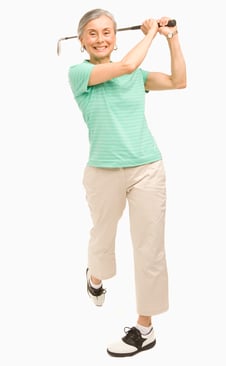 Most folks who have ever participated in balance training know that most exercises seem to involve only the legs. While it is important to focus on our lower extremities during our training, it is important to incorporate the use of our arms for more functional and effective training. Why? Because this will have more real-world applications! For example, practicing single leg stance is important for improving balance but most of us are not going to be in a situation where we must stand on one leg for an extended period of time. We will, however, be shifting our weight from one leg to another, swinging our arms like we do when walking, taking the stairs, dancing, or cleaning the house in real world daily activities.
Most folks who have ever participated in balance training know that most exercises seem to involve only the legs. While it is important to focus on our lower extremities during our training, it is important to incorporate the use of our arms for more functional and effective training. Why? Because this will have more real-world applications! For example, practicing single leg stance is important for improving balance but most of us are not going to be in a situation where we must stand on one leg for an extended period of time. We will, however, be shifting our weight from one leg to another, swinging our arms like we do when walking, taking the stairs, dancing, or cleaning the house in real world daily activities.
 “No Pan, No Gain”
“No Pan, No Gain”
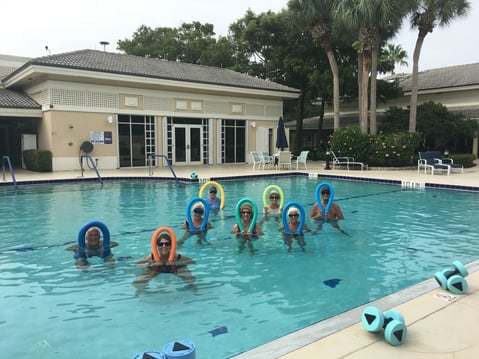 When you were a kid, going out to play was something you likely did every day. No matter if it was riding a bike, skipping rocks at the pond, or running around the neighborhood with friends, it was just fun! Moving came naturally and easy and was not considered “exercise” to the adolescent mind even though it was most certainly keeping your body healthy. The reason I bring this up is because I want you to think about those times. They were a lot of fun, weren’t they? Sometimes in our fitness center, we will hear a member say that exercise isn’t very fun. We get it! Exercise isn’t everyone’s cup of tea, but as a fitness professional, my goal is to find a way to make it fun for you. Another thing we will often here is “I’m not as young as I was!” or “I can’t do that type of movement anymore.” It is true, with the play you did as a child, there was probably a lot of falling, bumps, and bruises and that can make a person apprehensive to get started in “play” again. But that is why we are here, to explore with you and find a form of fitness that you enjoy. Yes, the several number of changes that tend to happen to the body as it goes through the stages of life can make some things more difficult, but we want to help keep it from being the reason you decide to play less.
When you were a kid, going out to play was something you likely did every day. No matter if it was riding a bike, skipping rocks at the pond, or running around the neighborhood with friends, it was just fun! Moving came naturally and easy and was not considered “exercise” to the adolescent mind even though it was most certainly keeping your body healthy. The reason I bring this up is because I want you to think about those times. They were a lot of fun, weren’t they? Sometimes in our fitness center, we will hear a member say that exercise isn’t very fun. We get it! Exercise isn’t everyone’s cup of tea, but as a fitness professional, my goal is to find a way to make it fun for you. Another thing we will often here is “I’m not as young as I was!” or “I can’t do that type of movement anymore.” It is true, with the play you did as a child, there was probably a lot of falling, bumps, and bruises and that can make a person apprehensive to get started in “play” again. But that is why we are here, to explore with you and find a form of fitness that you enjoy. Yes, the several number of changes that tend to happen to the body as it goes through the stages of life can make some things more difficult, but we want to help keep it from being the reason you decide to play less..jpg?width=485&height=372&name=Nustep%20(1).jpg) The NuStep is a great multifunctional piece of equipment. Did you know the NuStep can be used for more than just building endurance? You can build strength, cardio, AND endurance depending how you use it. This is what makes the
The NuStep is a great multifunctional piece of equipment. Did you know the NuStep can be used for more than just building endurance? You can build strength, cardio, AND endurance depending how you use it. This is what makes the 
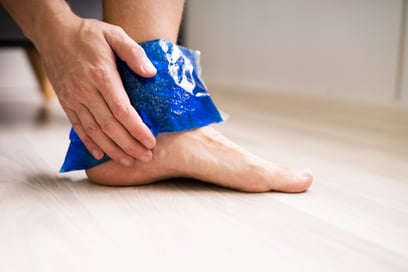 One of the biggest questions people have when experiencing and ache or pain is “do I use heat or ice to help eliminate my pain?” Ice and heating pads are among the most common treatments for pain, but are you using them correctly? If done wrong, using ice or heat may do more harm than good.
One of the biggest questions people have when experiencing and ache or pain is “do I use heat or ice to help eliminate my pain?” Ice and heating pads are among the most common treatments for pain, but are you using them correctly? If done wrong, using ice or heat may do more harm than good.
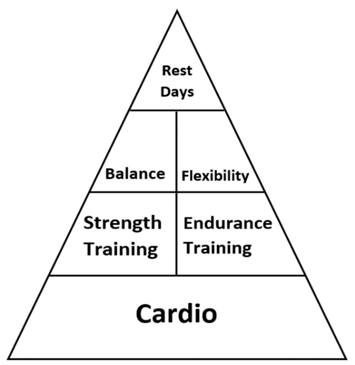

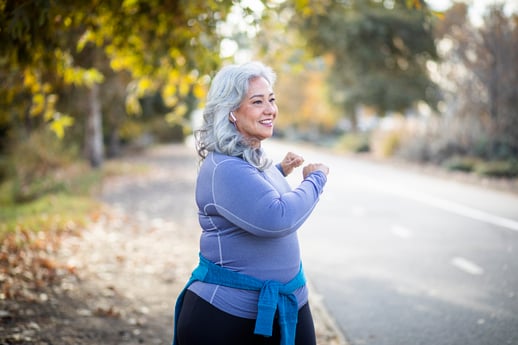 Y’all, spring is HERE! This means sunshine, beautiful weather, and outdoor activities! Whether you plan on exercising outdoors, playing games with the family, or maintaining the yard, please don’t forget to warm up first. Warming up helps get your body ready to move and helps reduce the likelihood of suffering an injury.
Y’all, spring is HERE! This means sunshine, beautiful weather, and outdoor activities! Whether you plan on exercising outdoors, playing games with the family, or maintaining the yard, please don’t forget to warm up first. Warming up helps get your body ready to move and helps reduce the likelihood of suffering an injury..jpg?width=404&name=GettyImages-1135376317%20(1).jpg) While practicing social distancing remains a priority for everyone, finding ways to stay physically active should also remain a priority. This is particularly true for older adults who may find themselves feeling increasingly isolated and vulnerable to remain safe. Exercise has long proven to provide numerous health benefits both for your physical well-being as well as your emotional well-being including:
While practicing social distancing remains a priority for everyone, finding ways to stay physically active should also remain a priority. This is particularly true for older adults who may find themselves feeling increasingly isolated and vulnerable to remain safe. Exercise has long proven to provide numerous health benefits both for your physical well-being as well as your emotional well-being including: